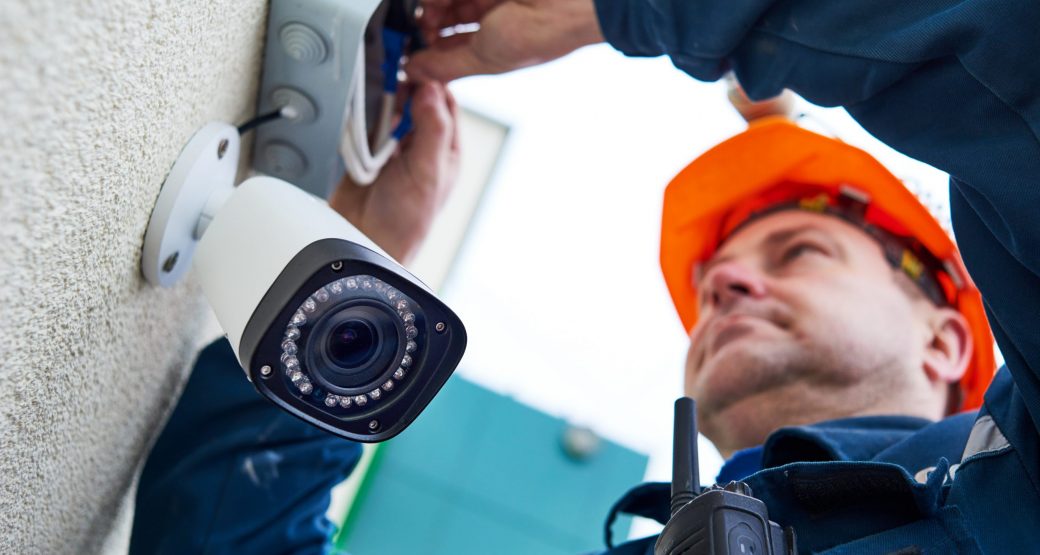
Securing Your Business: A Guide to Advanced Security Camera Systems
In the dynamic business world, security is not just a necessity—it’s a strategic imperative. As the heartbeat of your enterprise, safeguarding your business goes beyond traditional measures. It’s about embracing cutting-edge solutions that watch over your assets and elevate your overall security posture.
This guide unveils the power of an advanced security camera system, providing you with the insights and tips needed to fortify your business against potential threats. Welcome to a realm where vigilance meets innovation—let’s embark on a journey to secure your business like never before.
- Choose the Right Camera Types
When selecting cameras for your business, consider the specific needs of your environment. Bullet cameras are ideal for outdoor spaces, dome cameras offer discreet indoor surveillance, and PTZ (Pan-Tilt-Zoom) cameras provide flexibility in monitoring large areas. Understanding your business layout helps you choose the most effective camera types.
- High-resolution cameras for Clear Footage
Opt for high-resolution cameras, preferably 1080p or 4K, to ensure clear and detailed footage. This is crucial for identifying faces, license plates, or any other details that may be essential in an incident.
- Implement Remote Monitoring
Choose a security camera system that allows remote monitoring. This feature lets you watch your business from anywhere, providing real-time access to camera feeds via smartphones or computers. It adds an extra layer of convenience and responsiveness to your security measures.
- Intelligent Video Analytics
Leverage the power of intelligent video analytics. These features, powered by artificial intelligence, can detect unusual activities, track movement patterns, and send instant alerts for potential security threats. Integrating analytics enhances the proactive nature of your surveillance.
- Ensure Proper Camera Placement
Strategic camera placement is key to maximizing coverage. Identify critical areas such as entrances, exits, parking lots, and high-traffic zones. Ensure no blind spots and cameras are visible enough to act as deterrents.
- Night Vision Capabilities
Opt for cameras with advanced night vision capabilities. This ensures that your business is protected around the clock. High-quality infrared technology enables clear monitoring even in low-light conditions, providing continuous surveillance during nighttime.
- Secure Footage Storage
Implement a robust storage solution for your camera footage. Choose systems with ample storage capacity and consider options like cloud storage for added redundancy. Regularly back up your footage to prevent data loss in case of hardware failures.
- Access Control Integration
Integrate your security camera system with access control systems for a comprehensive security solution. This allows you to monitor and manage who enters and exits your premises, enhancing overall security measures.
- Regular Maintenance and Upgrades
Schedule regular maintenance for your security camera system to ensure optimal performance. Check for any physical damage, clean lenses, and apply software updates promptly. Regular upgrades keep your system equipped with the latest security features.
- Employee Training on System Usage
Educate your employees on how to use the security camera system effectively. This includes understanding how to access footage, operate cameras, and respond to alerts. Well-trained staff contribute to the overall effectiveness of your security measures.
These are the best practices and considerations to strike the delicate balance between safeguarding your premises and respecting individual privacy rights:
- Strategic Camera Placement: The first line of defense in preserving privacy lies in where you position your cameras. Ensure that surveillance cameras focus on high-traffic areas and critical points, steering clear of private spaces like restrooms or residential areas. Thoughtful camera placement maximizes security coverage and minimizes unintentional intrusion into personal spheres.
- Clear Signage and Communication: Transparency is key regarding privacy in surveillance. Display signage indicating the presence of surveillance cameras. This serves as a deterrent to potential wrongdoers and informs individuals that their actions may be recorded. Communication fosters awareness, allowing people to make informed decisions within the monitored space.
- Facial Recognition and Biometrics: While facial recognition technology can enhance security, it raises significant privacy concerns. Exercise caution when implementing such features, especially in public spaces. If utilized, ensure strict adherence to privacy regulations, allowing individuals to opt-out or providing clear explanations of how their biometric data will be handled.
- Data Encryption and Secure Storage: Protecting the privacy of recorded data is paramount. Implement robust data encryption protocols to safeguard footage from unauthorized access. Choose secure storage options, whether on-premises or in the cloud and regularly update access credentials. A secure foundation ensures that sensitive information remains confidential.
- Regular Privacy Impact Assessments: Conducting regular privacy impact assessments (PIAs) is a proactive measure to identify and address potential privacy risks associated with your surveillance system. This ongoing evaluation allows you to adapt your security measures in alignment with evolving privacy standards and legal requirements.
- Limited Access Controls: Restrict surveillance footage access to only those who require it for legitimate reasons. Implement role-based access controls to ensure employees can only view or retrieve footage relevant to their responsibilities. You mitigate the risk of unauthorized use or privacy breaches by minimizing access.
- Anonymous Monitoring and Blurring: Consider implementing anonymous monitoring features focusing on crowd movements rather than individual identities. Additionally, explore technologies that allow for real-time or post-capture blurring of faces or other identifying features, providing an extra layer of protection for personal privacy.
Investing in an advanced security camera system is pivotal in fortifying your safety measures. However, the journey towards enhanced security begins not at the checkout counter but with careful consideration and strategic planning. Before you make that crucial purchase, let’s navigate through the key factors you should weigh, ensuring that your investment aligns seamlessly with your security needs and expectations:
- Define Your Security Objectives: Indicate your security goals before diving into advanced security cameras. Are you primarily concerned with external threats, or is internal monitoring equally important? Understanding your specific objectives will guide you in selecting a system tailored to your needs.
- Assess Your Environment: Conduct a thorough assessment of the environment where the cameras will be deployed. Take note of lighting conditions, the size of the area to be monitored, and potential blind spots. This information will influence your choice of camera types, resolution, and additional features needed for optimal performance.
- Budgetary Constraints: Establish a realistic budget for your security camera system. While advanced systems offer a range of features, balancing your security needs with financial constraints is essential. Consider the total cost of ownership, including installation, maintenance, and any additional components required for a comprehensive solution.
In conclusion, investing in an advanced security camera system is an investment in the safety and security of your business. By selecting the right cameras, utilizing intelligent features, and implementing best practices, you can create a robust security infrastructure that deters potential threats and provides peace of mind for you and your employees.






